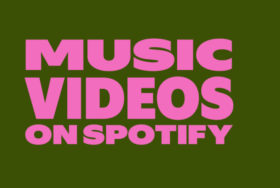
By Amy Tucker, Co–Founder, Springboards
 AI, especially Large Language Models (LLMs), is no longer a fringe concept; it’s deeply embedded across industries, revolutionizing even the most creative sectors. While AI offers immense efficiency, we must critically examine its impact on the essence of creative output and guard against a descent into uniformity. Machine learning only lifts the floor—it limits us to what’s popular right now.
AI, especially Large Language Models (LLMs), is no longer a fringe concept; it’s deeply embedded across industries, revolutionizing even the most creative sectors. While AI offers immense efficiency, we must critically examine its impact on the essence of creative output and guard against a descent into uniformity. Machine learning only lifts the floor—it limits us to what’s popular right now.
The Lure of Efficiency vs. The Cost of Sameness
While undeniably powerful, AI tools are often engineered for lightning-fast results and statistical norms, leading to outputs that are predictable and “safe.” This drive for optimization can unwittingly suffocate true originality, resulting in a creative landscape that’s increasingly bland and uniform. Open up any LLM (ChatGPT, Claude, Gemini, etc) and ask it to give you any number from one to 10. Spoiler alert: Nearly every time, you’ll get 7. And if you ask it again, I bet you that you’re going to get 3 or 4. That’s because these models are machines designed to recognize a pattern and give you the most probable answer. These tools are built for probability, not possibility.
Reclaiming the Human Edge: The Imperative for Unique Perspectives
True creative impact stems from deliberate disruption, unexpected insights, and a resolute willingness to deviate from established norms, embracing the unconventional and exploring uncharted territories. Creative strategists and advertisers must actively champion originality and challenge the inherent biases towards average or predictable solutions often found in AI models, guiding AI’s application for truly unique and impactful outcomes. From a leadership perspective, it is paramount that creative leaders cultivate and nurture environments where truly unique and groundbreaking ideas can emerge and flourish. These environments should be unburdened by algorithmic constraints or the pressure to conform to AI-generated averages, fostering a culture of experimentation and risk-taking for human intuition and originality to thrive.
Strategic Application: Guiding AI, Not Being Guided By It
Advocate for a more strategic and intentional approach to using AI as a tool rather than a primary driver of creative direction. Suggest ways creative professionals can leverage AI for tasks like initial ideation, or mundane production, freeing up human capacity for higher-level, truly inventive thinking. Use AI to start faster, explore more, think together—not spit out your final draft. Encourage advertisers and strategists to focus on the human oversight, critical thinking, and unique brand voice that AI cannot replicate. Layer your taste and instinct over the top; that’s the stuff that LLMs can’t fake.
The Future of Creativity is Human-Led
AI is a powerful assistant, but the heart of impactful creativity remains firmly in human hands. The partnership between human ingenuity and AI efficiency leads to richer, more diverse, and more effective creative outcomes for brands. In a world increasingly shaped by algorithms, it’s crucial to nurture what makes us distinct. Clients aren’t buying ads – they’re buying hope, perspective and ideas they could never get without you.
That’s something an LLM can never do.







